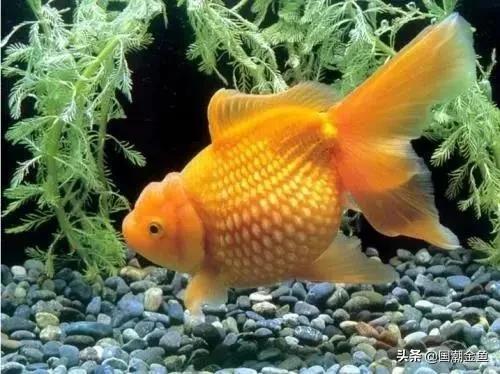Translated by Jaren
Goldfish are resilient creatures and generally have low environmental requirements, though they are accustomed to living in lower-temperature environments. Though the most suitable living temperatures are within the 15 to 18°C range, goldfish can withstand high temperature environments reaching up to 34°C or as low as -4°C under ice. However, since goldfish have small hearts, they cannot go through major temperature changes, hence outdoor areas with large temperature differences between day and night are avoided.
There are currently more than 300 species of goldfish, and new species are still emerging. We can, however, fit them all in the following categories depending on their physical characteristics.
Single Tailed Breeds: They look like a crucian carp, but with bright colours e.g., red crucian carp.
Double Tailed Breeds: These types of fish have two tails. Some species of goldfish in this type have large bulging eyes like the dragon eye goldfish, whilst some do not have this, such as pearl-scale goldfish.
Dorsal-less Breeds: As the name suggests, they have no dorsal fin. Some have bodies that are plump like an egg with eyeballs that are not prominent such as the tiger head goldfish. Though there are some species that have an arch-shaped spine with prominent eyeballs like the celestial eye goldfish.
Common Goldfish
Common goldfishes have quite a similar body shape to that of a crucian carp. They can survive in waters with a temperature of 0 - 39℃. They can adapt to sudden temperature changes of 7-8˚C, therefore, its resistance and adaptability are relatively better than other goldfish species. These small little fishes are easy to raise and require very little upkeep. For novices, these goldfishes are very easy to take care of and are a perfect way to improve your home environment due to their sharp, bright colour!
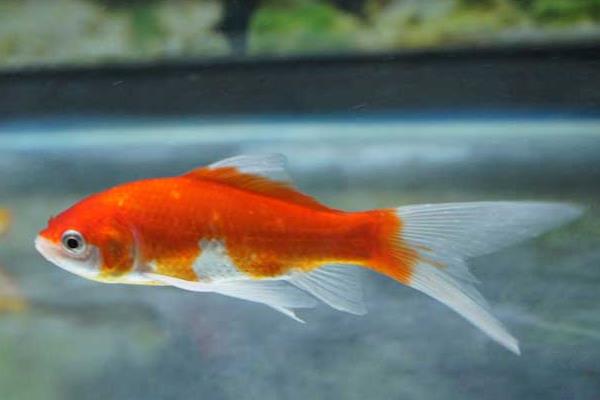 https://www.zhifure.com/snzfj/65864.html
Dragon Eye Goldfish
https://www.zhifure.com/snzfj/65864.html
Dragon Eye Goldfish
A relatively primitive species of goldfish, the dragon eye goldfish’s physique is strong, beautiful, and comes in a variety of different colours. Dragon Eye goldfish are easily adaptable to its environment, able to grow and reproduce in water low in oxygen and high alkalinity. It is a versatile fish that can live in deep water, shallow water, clear water, turbid water, running water, still water, large water bodies and small water bodies. However, unlike the common goldfish, dragon eye goldfish cannot tolerate sudden changes in water temperature. If the water temperature suddenly changes above 5°C, they can get sick and even die.
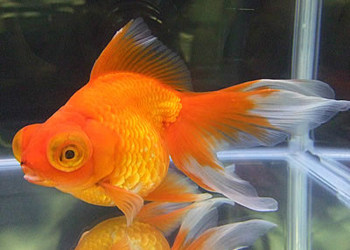 https://www.pchouse.com.cn/baike/shenghuo/6094/
Lionhead Goldfish
https://www.pchouse.com.cn/baike/shenghuo/6094/
Lionhead Goldfish
Being a type of fancy goldfish, the lionhead goldish comes in many different colour variations including the red, blue, black and white, red top five-flowered, and so on. The traditional lion head goldfish has a head in the shape of a block, evenly distributed on the top of the head and cheeks. The overall view is large and wife in the front whilst being small and narrow towards the tail-end.
In terms of care, the water should be changed frequently to increase dissolved oxygen in the water. When changing the water, change one-third to one-half several times since the goldfish cannot adapt to it. Fish feed and colour-enhancing additives can be used to feed these types of fish. Generally, the rectangular aquariums found in homes are relatively small, so bear in mind how many fishes can comfortably be accommodated.
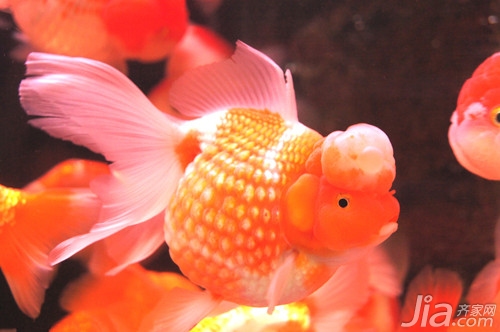 https://www.imynest.com/content/96450.html
Butterfly-tailed Goldfish
https://www.imynest.com/content/96450.html
Butterfly-tailed Goldfish
This goldfish is quite a popular type of fancy goldfish. They are delicate fishes that needs close monitoring to the water quality, despite being able to adapt to water temperatures of 10-30°C. They enjoy water with a low mineral content and weak alkaline. By looking at the fish’s tail, one can see the water quality of the tank and detect upcoming diseases in the fish, since if the quality of the water is poor, the fish's tail can appear bloody, noticeable at first glance.
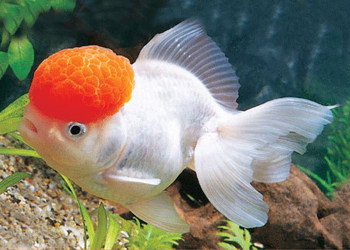 https://www.pchouse.com.cn/baike/shenghuo/6101/
Caring precautions for goldfish:
https://www.pchouse.com.cn/baike/shenghuo/6101/
Caring precautions for goldfish:
The first thing to do is to determine the size of the tank according to the size and number of goldfish you raise. A lot of goldfish huddling in a small tank can easily cause a lack of oxygen and hygiene in the water. In addition, your goldfishes need their space to swim around!
Second, new water cannot directly replace the old water when changing the water in the fish tank. The new water for your goldfish must be stored for 1 -2 days. This is called "basking." The purpose is to slowly remove the chlorine in the water, as well as allowing the temperature of the new water to be similar to the old.
Third, be sure to regulate a steady temperature in the water. Despite being able to live in a wide range of temperatures and can still survive under ice during winter a drastic change in the water temperature it will easily put your goldfish in danger. On the same thread, the fish tank should not be exposed to direct sunlight in hot weather.
Fourth, goldfishes only need to be fed once or twice a day. Their excrement can be used to distinguish their hunger and satiety, as well as their digestion and absorption. For example, if the excrement is green, brown or black, it means that the fish has a good absorption capacity, and if they excrete white feces, it means that they are too full. Remember, goldfishes don’t have stomachs, so they don’t feel full. It is up to you to control how much they eat!
Fifth, when changing the water, be sure not to change all the water at once. Because of the sudden change in water quality, your goldfish will not be able to adapt to it before getting sick, and even die.
Sources:
https://min.news/zh-hk/pet/0b0f540435bd3cc7d4bf2d4eded70548.html
https://kknews.cc/zh-hk/pet/5j8pvx3.html




